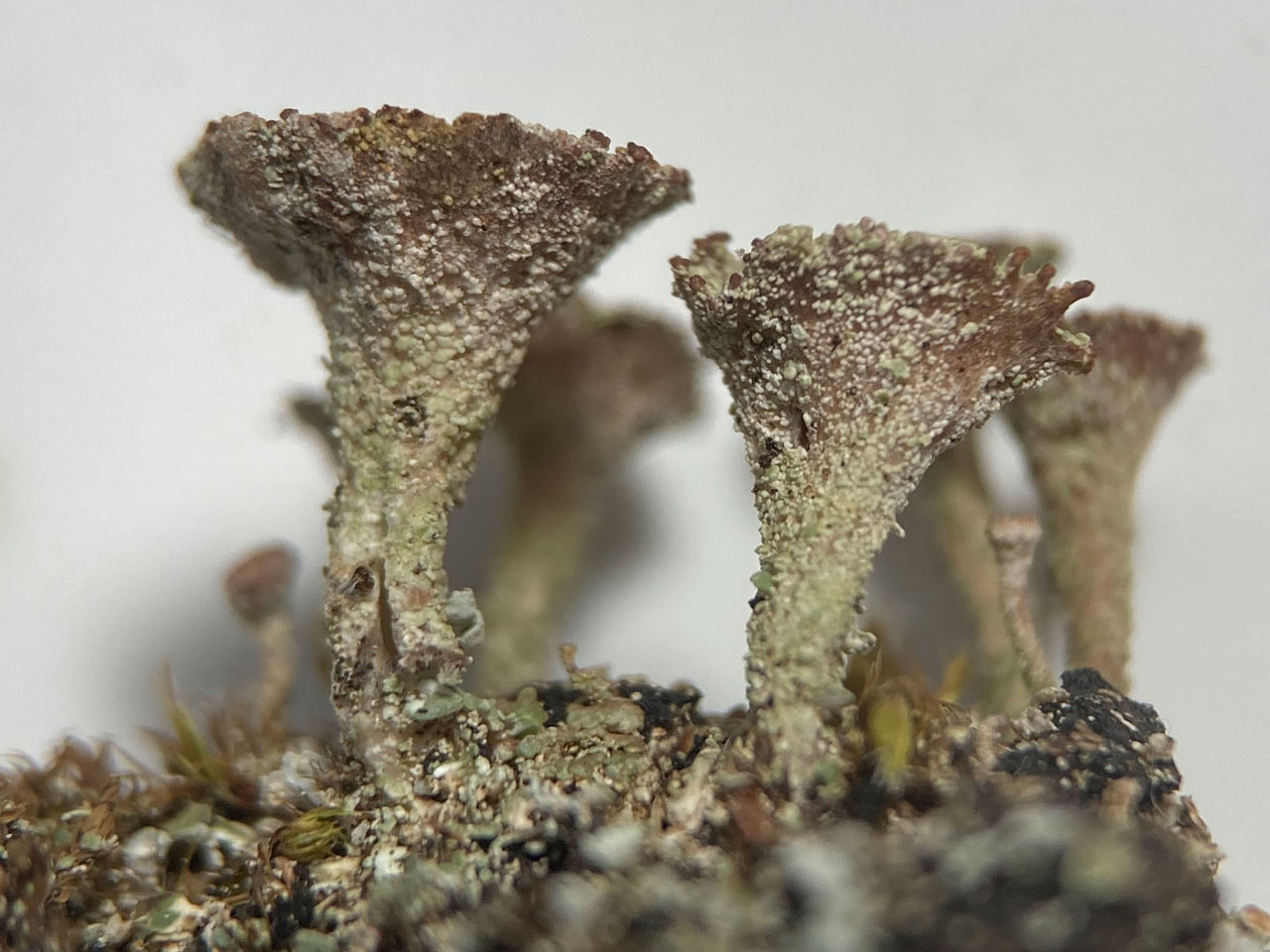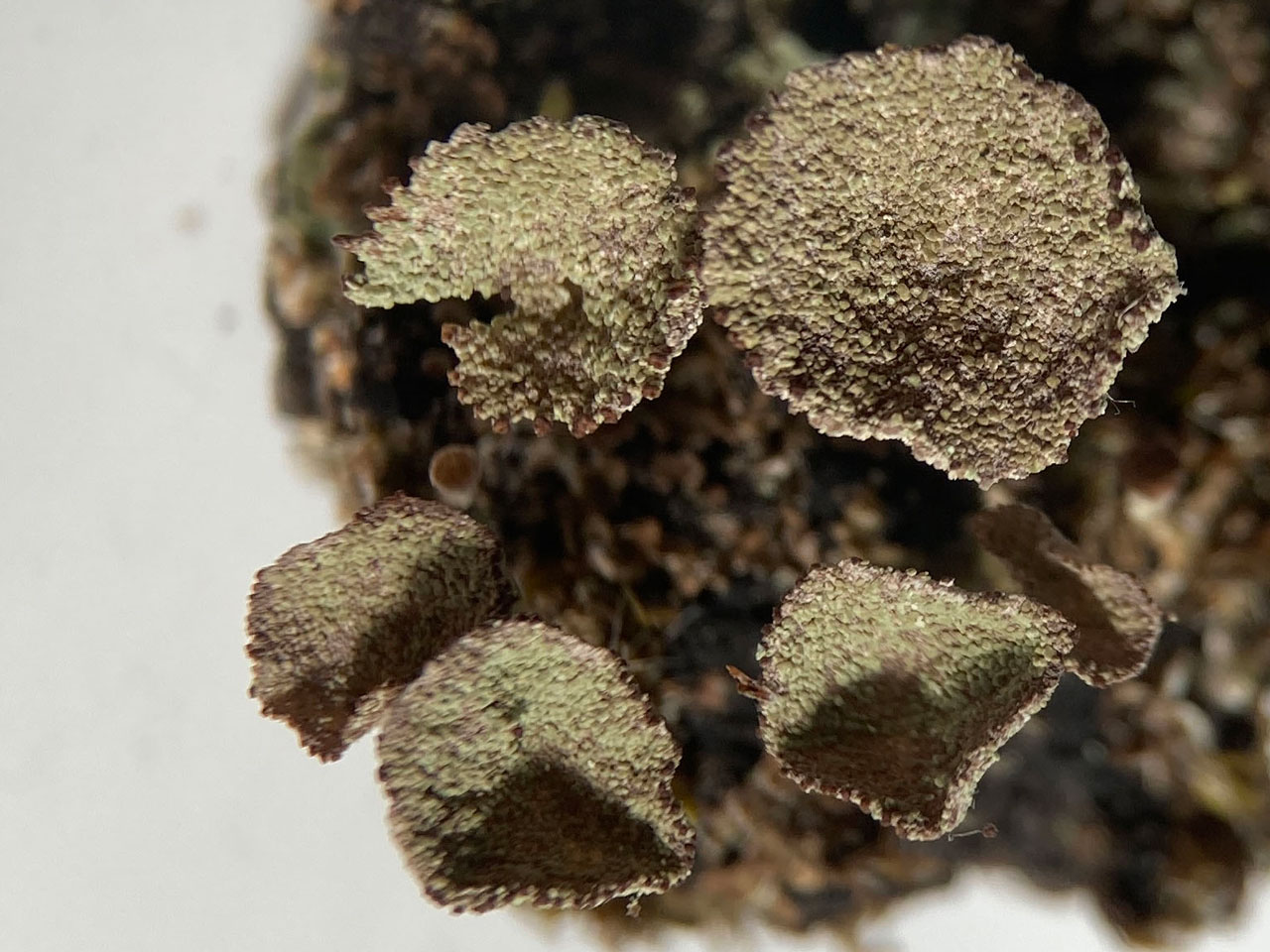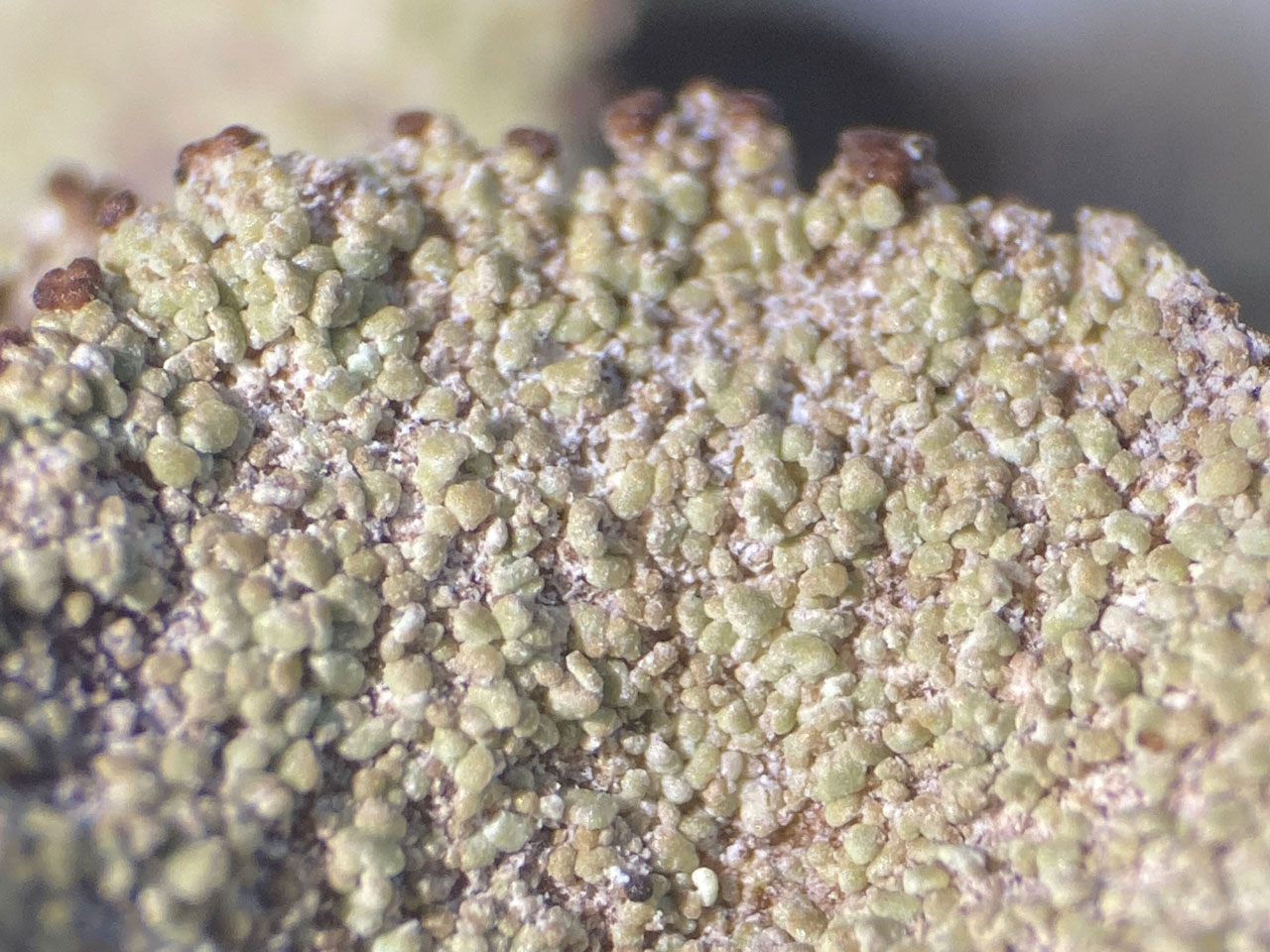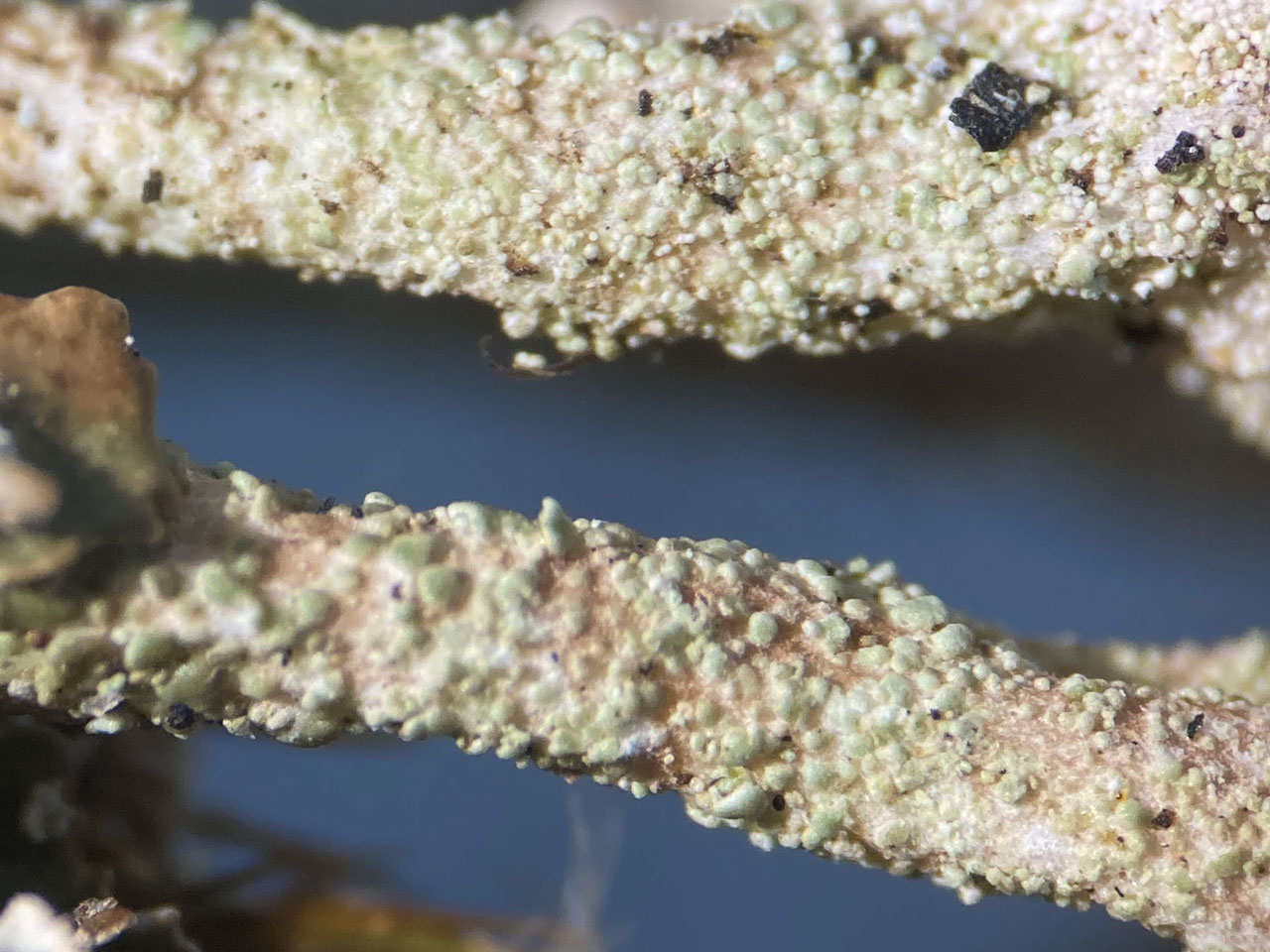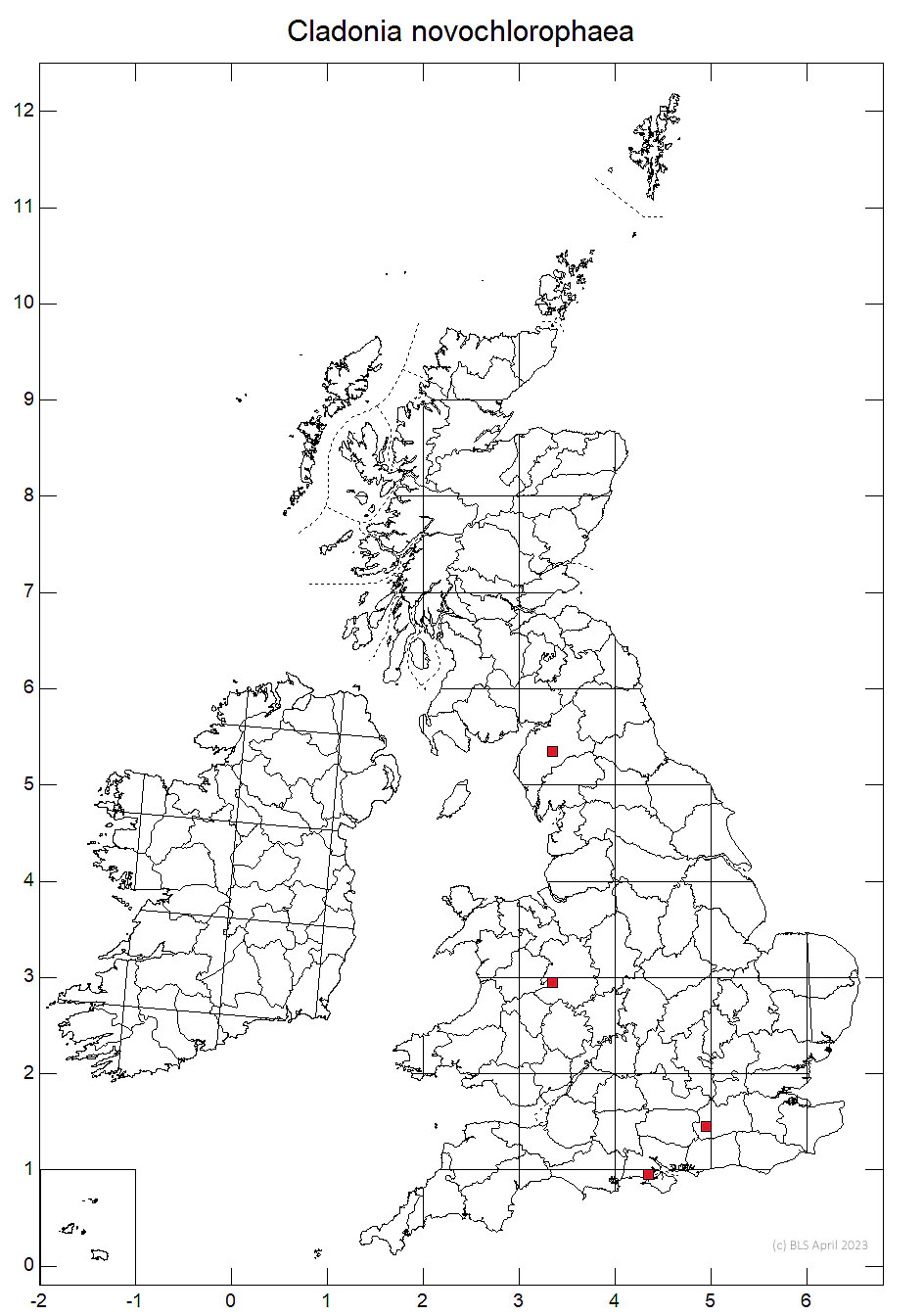A pixie cup included within the Cladonia chlorophaea s. lat. morphological complex and a part of the difficult to identify Cladonia grayi group. Very similar to Cladonia merochlorophaea, in having a coarsely verruculose dark podeta but differs in the C+ yellow and KC– reactions, as opposed to C+ red and KC+ wine red of Cladonia merochlorophaea, but it appears rare and not easy to spot.
A pixie cup included within the Cladonia chlorophaea s. lat. morphocomplex, but the podetia are usually entirely without soredia, dark brown and often blackened at the base, and verruculose. Thallus C+ yellow, K–, KC–, Pd± orange-red, UV+ white (sekikaic, homosekikaic and ± fumarprotocetraric acids).
See under Cladonia chlorophaea s. lat., for a comparison of chemistry within the Cladonia grayi group. The dark brown verruculose podetia also provide a good indicator for identification but TLC is recommended to confirm identification.
On peaty soil or decaying wood, and on mine spoil; apparently rare

Reported from England (Cumberland, Shropshire, Surrey) but likely to be under-recorded
Pino-Bodas, R., Sanderson, N., Cannon, P., Aptroot, A., Coppins, B., Orange, A. & Simkin, J. (2021). Lecanorales: Cladoniaceae, including the genera Cladonia, Pilophorus and Pycnothelia. Revisions of British and Irish Lichens 19: 1-45. Link
Text by N A Sanderson, based Pino-Bodas et al (2021)
